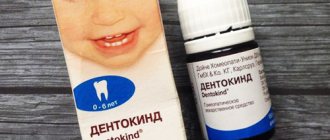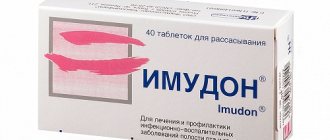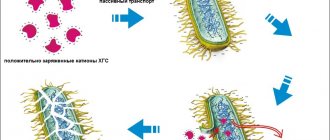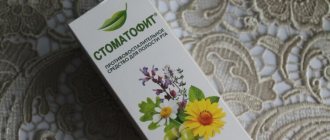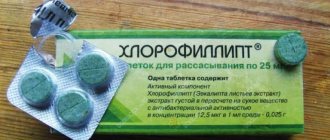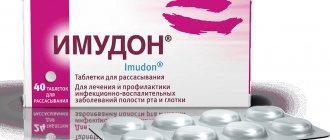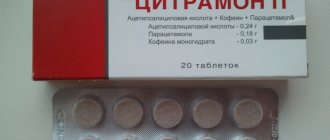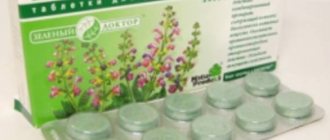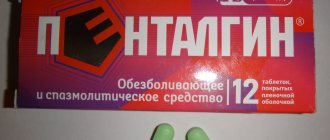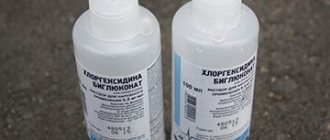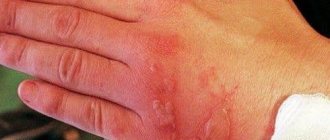| : Incorrect or missing image | This article lacks links to sources of information. Information must be verifiable, otherwise it may be questioned and deleted. You may edit this article to include links to authoritative sources. This mark is set February 14, 2020 . |
K:Wikipedia:Articles without sources (type: not specified)
| Chlorhexidine | ||
| Chemical compound | ||
| IUPAC | N' , N""' -hexane-1,6-diylbis[ N -(4-chlorophenyl)(imidodicarbonimidic diamide)] | |
| Gross formula | C22H30Cl2N10 | |
| Mol. weight | 505.446 g/mol | |
| CAS | [www.nlm.nih.gov/cgi/mesh/2006/MB_cgi?term=55-56-1&rn=1 55-56-1] | |
| PubChem | [pubchem.ncbi.nlm.nih.gov/summary/summary.cgi?cid=5353524 5353524] | |
| DrugBank | [www.drugbank.ca/drugs/APRD00545 APRD00545] | |
| Classification | ||
| ATX | [www.whocc.no/atc_ddd_index/?code=A01AB03 A01AB03] [www.whocc.no/atc_ddd_index/?code=B05CA02 B05CA02], [www.whocc.no/atc_ddd_index/?code=D08AC02 D08AC02], [www. whocc.no/atc_ddd_index/?code=D09AA12 D09AA12], [www.whocc.no/atc_ddd_index/?code=R02AA05 R02AA05], [www.whocc.no/atc_ddd_index/?code=S01AX09 S01AX09], [www.whocc. no/atc_ddd_index/?code=S02AA09 S02AA09], [www.whocc.no/atc_ddd_index/?code=S03AA04 S03AA04] | |
| Dosage forms | ||
| 20% aqueous solution in bottles of 500 ml, 2 l, 5 l. | ||
| Trade names | ||
| “Sebidin”, “Amident”, “Hexicon”, “Chlorhexidine bigluconate” | ||
Chlorhexidine
- a medicinal product, an antiseptic, in finished dosage forms used in the form of bigluconate (Chlorhexidini bigluconas). Chlorhexidine has been successfully used as a skin antiseptic and disinfectant for over 60 years.
Content
- 1. History
- 2 Pharmacological properties
- 3 Release forms
- 4 Method of administration and dosage
- 5 Application 5.1 Contraindications
- 5.2 With caution
- 6.1 Interaction with other drugs
Story
1950 - Opened in the UK 1954 - The first commercial product appeared on the market: a topical antiseptic based on chlorhexidine 1970 - Numerous clinical studies have shown the high antibacterial activity of chlorhexidine, hand treatment with a skin antiseptic containing chlorhexidine has proven to be the most effective.
1976 - The ability of chlorhexidine to inhibit the development of caries was demonstrated. 1981 - Chlorhexidine was first used as an antibacterial component in lubricants used in urological practice 1988 - The first alcohol-containing skin antiseptics based on a 2% chlorhexidine solution appeared on the market 1992 - A central catheter impregnated with chlorhexidine was first introduced to the US market 1993 - Wipes and sponges impregnated with chlorhexidine, intended for both household and professional use 2005 - Clothing for patients impregnated with chlorhexidine received FDA approval 2010-2012 - A number of medical products received FDA approval: catheters and implants impregnated with chlorhexidine It is worth noting that For all the time of commercial use and scientific research of chlorhexidine, not one of them has been able to convincingly prove the possibility of the formation of chlorhexidine-resistant microorganisms. However, according to recent studies, the use of chlorhexidine can cause antibiotic resistance in bacteria (in particular, Klebsiella pneumoniae resistance to Colistin)[1]
Side effects
With prolonged use, unwanted reactions of the body may occur.
- Temporary change in tooth color.
- Changes in taste sensitivity due to bitter taste.
- Dermatitis, skin reactions.
- In rare cases, the drug increases the occurrence of stones on teeth.
An overdose of liquid based on chlorhexidine bigluconate has not been identified. People with hypersensitivity to the active substance may experience allergic reactions.
There are drugs that can replace chlorhexidine, in the absence of it or in the presence of a hypersensitivity reaction to the component.
- Miramistin;
- Lido Plus spray;
- Hexoral;
- Furacilin;
- Rotokan;
- Chlorophyllipt;
- Pharmaseptic.
Video: how to gargle for dummies?
“My five-year-old child was diagnosed with stomatitis. The son behaved restlessly, because he was bothered by pain in his mouth. The dentist prescribed rinsing my mouth with a solution of chlorhexidine digluconate for 7 days. The baby and I carried out the assignment properly. After 3 days, they discovered that the ulcer had decreased in size and no longer caused such discomfort. A week later we went to the doctor again, where he found no traces of the disease.”
“During my pregnancy with my second child, I got sick. I was bothered by a sore throat. I care about my health; the safety of medications for my unborn baby is important to me. The therapist recommended gargling with 0.05% chlorhexidine liquid. The drug has an unpleasant bitter taste, but after gargling you immediately feel relief in the throat. It’s a good drug, I’m especially glad that it can be used by pregnant women.”
“Chlorhexidine is always in our home medicine cabinet. It is simply a universal antiseptic that is used for many diseases. I used it very often before, but at the next examination the dentist noticed the color of my teeth, after which I told him about rinsing with chlorhexidine. It turns out that the drug should not be used too often, because it leads to the destruction of beneficial microflora and the development of immunity in pathogenic microorganisms, and also makes teeth gray.”
Pharmacological properties
Chemically, it is a dichlorine-containing biguanide derivative. The structure is very close to bigumal. The mechanism of action of chlorhexidine is to interact with phosphate groups on the cell surface, resulting in a shift in osmotic balance, disruption of the integrity of the cell and its death.
Chlorhexidine is an antiseptic drug, active against gram-positive and gram-negative bacteria ( Treponema pallidum
,
Chlamydia
spp.,
Ureaplasma
spp.,
Neisseria gonorrhoeae
,
Gardnerella vaginalis
,
Bacteroides fragilis
, except for Mycobacterium tuberculosis);
protozoa ( Trichomonas vaginalis
); herpes virus. The drug is stable and after treating the skin (hands, surgical field, etc.) with it, it remains on it in a certain amount, which continues to give a bactericidal effect.
The drug retains activity in the presence of blood and pus, although somewhat reduced.
Used for treating the surgical field and the surgeon's hands, disinfecting surgical instruments, as well as for purulent-septic processes (washing surgical wounds, bladder, etc.) and for the prevention of sexually transmitted diseases (syphilis, gonorrhea, trichomoniasis). The substance chlorhexidine bigluconate is available in the form of a 20% aqueous solution. The ready-to-use drug is a less concentrated aqueous or aqueous-alcoholic solution. So, to treat the surgical field, dilute a 20% solution with 70% ethyl alcohol in a ratio of 1:40. The resulting 0.5% aqueous-alcohol solution of chlorhexidine digluconate is used to treat the surgical field 2 times with an interval of 2 minutes. To quickly sterilize instruments, use the same solution for 5 minutes. To disinfect wounds and burns, use a 0.5% aqueous solution; for hand disinfection - 0.5% alcohol solution or 1% aqueous solution. When using the drug to treat the surgeon's hands, transient dryness and itching of the skin and dermatitis are possible; The skin of the hands may also become sticky for 3-5 minutes.
How to properly prepare the solution
According to the instructions for using Chlorhexidine for rinsing teeth, the concentrated solution must first be diluted with water. Mostly 0.05% is sold in pharmacies. It is ready for use and does not need to be diluted.
If the drug is more concentrated, then before use it must first be diluted with water. With a concentration of 0.2%, you need to take 2.5 ml of the medicine and dissolve it in 1 liter of water. It must be boiled or distilled.
It is important to remember that you only need to rinse your mouth with warm liquid, since hot liquid can aggravate the inflammatory process, and cold liquid can quite narrow the blood vessels of the mucous membrane, while the therapeutic effect will be minimal. It is worth noting that the prepared product cannot be stored for too long, so it is better to prepare a new, small portion each time.
Release forms
Vaginal suppositories
- one suppository contains 0.016 g of chlorhexidine bigluconate
Vaginal suppositories (children's form)
- one suppository contains 0.008 g of chlorhexidine bigluconate
Gel for local and external use 0.5%
- 100 g of gel contains 0.5 g of chlorhexidine bigluconate
Solution for external use 0.05%
- 100 ml of purified water contains a solution of chlorhexidine bigluconate 20% - 0.25 ml
Effect of the drug
Chlorhexidine belongs to a group of drugs that have an antiseptic effect. The drug disrupts the integrity of the bacterial cell wall, which leads to its destruction. It is important to note that chlorhexidine digluconate does not affect viruses, so its use is not advisable in the event of a viral infection. The only virus that is killed by the product is the herpes virus.
Chlorhexidine has good stability in the external environment.
- The active film on the mucous membrane remains for several hours after rinsing the mouth.
- Increasing the temperature of the liquid has a beneficial effect on the antiseptic properties.
- The drug retains its effect in a purulent environment, as well as in the presence of blood.
Read also: Chlorhexidine stains teeth
The use of chlorhexidine has a positive effect on the restoration of the body's defenses, relieves inflammation, helps reduce swelling and hyperemia, and also has a positive effect on tissue regeneration.
Directions for use and doses
Chlorhexidine is used externally and locally as a prophylactic and therapeutic agent. 0.05, 0.2 and 0.5% aqueous solutions are used in the form of irrigation, rinsing and applications - 5-10 ml of solution is applied to the affected surface of the skin or mucous membranes with an exposure of 1-3 minutes 2-3 times a day (for tampon or by irrigation). Treatment of medical instruments and working surfaces is carried out with a clean sponge moistened with an antiseptic solution, or by soaking. For the prevention of sexually transmitted diseases, the drug is effective if it is used no later than 2 hours after sexual intercourse. Using a nozzle, insert the contents of the bottle into the urethra of men (2-3 ml), women (1-2 ml) and into the vagina (5-10 ml) for 2-3 minutes. Treat the skin of the inner thighs, pubis, and genitals. After the procedure, do not urinate for 2 hours. Complex treatment of urethritis and urethroprostatitis is carried out by injecting 2-3 ml of a 0.05% solution of chlorhexidine bigluconate into the urethra 1-2 times a day, the course is 10 days, procedures are prescribed every other day. Intravaginally, 1 suppository 3-4 times a day for 7-20 days, depending on the nature of the disease. A rinse solution and a gel for topical use are usually prescribed 2-3 times a day. Plaster: remove the protective film from the surface of the plaster without touching the bandage pad with your fingers, and apply it to the damaged area of the skin. Press the edges of the patch with your fingers so that the sticky part of the patch fixes the bandage.
In 2013, WHO added a 7% solution of chlorhexidine bigluconate to the list of essential medicines. In accordance with WHO recommendations, the umbilical cord (umbilical wound) is treated with a 7% solution, which reduces the likelihood of infection of newborns.
Rinse for stomatitis
The use of "Chlorhexidine" for rinsing is mandatory for diseases such as stomatitis. The use of this drug helps stop the proliferation of bacteria. You need to rinse 1-2 times a day with careful adherence to oral hygiene.
It is imperative to remember that this drug is completely incompatible with iodine. The course of therapy is no more than 10 days. It is very important to know exactly how to rinse your gums with chlorhexidine digluconate during stomatitis.
You can even use a weak solution of 0.02%. Whether it is necessary to dilute a mouthwash for stomatitis largely depends on the initial concentration of the drug. All recommendations are indicated in the instructions for use. You need to treat the affected mucous membrane 2-3 times a day after brushing your teeth. The procedure takes 1 minute. After rinsing your teeth with Chlorhexidine, it is not recommended to drink or eat food for 30 minutes.
Application
Vaginal suppositories
- treatment of vaginal infections (bacterial vaginosis, trichomoniasis, nonspecific, mixed infections)
- emergency individual prevention of sexually transmitted infections (syphilis, gonorrhea, trichomoniasis, chlamydia, ureaplasmosis)
- sanitation of the birth canal to prepare for delivery and management of the postpartum period in women at risk for infectious and inflammatory complications
Vaginal suppositories can be used in all trimesters of pregnancy and lactation. Vaginal suppositories have a gentle effect on the mucous membrane, preserving normal vaginal microflora. K: Wikipedia: Articles without sources (type: not specified)[ source not specified 3852 days
]
Vaginal suppositories (children's form)
- local treatment
Gel for local and external use 0.5%
- treatment of wounds, abrasions, scratches, burns, scratches
- treatment and prevention of skin and mucous membrane infections
- application in dentistry (gingivitis, stomatitis and periodontitis)
- acne treatment (as part of complex therapy)
- skin care after cosmetic procedures (piercing, tattooing, depilation)
- protection against germs in public places, outdoors
Solution for external use 0.05%
- washing wounds, abrasions, scratches, burns, scratching insect bites
- application in dentistry (gingivitis, stomatitis and periodontitis)
- treatment of ENT diseases (pharyngitis, laryngitis, tonsillitis, otitis)
- protection against germs in public places, outdoors
- prevention of sexually transmitted infections
1% aqueous solution of chlorhexidine bigluconate
- for general disinfection of premises, sanitary equipment, etc.
Contraindications
Hypersensitivity to the components of the drug, dermatitis, allergic reactions. The simultaneous use of iodine preparations is undesirable to avoid the development of dermatitis. You should not use chlorhexidine solutions for treating the conjunctiva and for rinsing cavities.
Carefully
Use with caution in children.
Chlorhexidine is used to prevent STDs only as an emergency measure (broken condom, casual sexual contact). Regular and repeated instillations of chlorhexidine into the urethra can cause chemical burns (especially with individual hypersensitivity to the drug), which can ultimately lead to such a serious complication as urethral strictureK: Wikipedia: Articles without sources (type: not specified)[ source not specified 1619 days
].
Contraindications
Hypersensitivity to the components of the drug, dermatitis, allergic reactions. The simultaneous use of iodine preparations is undesirable to avoid the development of dermatitis. You should not use chlorhexidine solutions for treating the conjunctiva and for rinsing cavities.
Carefully
Use with caution in children.
Chlorhexidine is used to prevent STDs only as an emergency measure (broken condom, casual sexual contact). Regular and repeated instillations of chlorhexidine into the urethra can cause chemical burns (especially with individual hypersensitivity to the drug), which can ultimately lead to such a serious complication as urethral stricture [ source not specified 883 days
].
Side effect
Vaginal suppositories
. Allergic reactions and itching are possible, which disappear after discontinuation of the drugs. Bleeding of varying intensity may occur.
Gel
. Allergic reactions, dry skin, itching, discoloration of the skin, dermatitis, stickiness of the skin of the hands (3-7 minutes) when using the gel, photosensitivity (the phenomenon of increasing the sensitivity of the body (usually the skin and mucous membranes) to the action of ultraviolet radiation). In the treatment of gingivitis - staining of tooth enamel, tartar deposits, taste disturbance. Enamel staining and tartar deposits occur with prolonged use of the drug.
Solution
. It extremely rarely causes allergic reactions and itching, which disappear after discontinuation of the drug.
Interaction with other drugs
Concomitant use with iodine is not recommended.
Chlorhexidine is incompatible with detergents containing anionic group (saponins, sodium lauryl sulfate, sulfonic acid, sodium carboxymethylcellulose) and soaps. The presence of soap can inactivate chlorhexidine, so before using the drug, any remaining soap must be thoroughly rinsed off.
Ethanol enhances the effectiveness of the drug.
special instructions
Vaginal suppositories. Toilet of the external genitalia does not affect the effectiveness and tolerability of vaginal suppositories, since the drug is used intravaginally.
Solution and gel. Avoid getting the drug inside the wound of patients with open traumatic brain injury, spinal cord injuries, or perforation of the eardrum. If the solution gets on the mucous membranes of the eye, they should be quickly and thoroughly rinsed with water. Safety Data Sheets (MSDS) for chlorhexidine digluconate.
Contact of hypochlorite bleaches on fabrics that have previously been in contact with chlorhexidine-containing products may cause brown stains. The bactericidal effect increases with increasing solution temperature. At temperatures above 100 °C the drug partially decomposes.
Description and composition
Chlorhexidine is a local antiseptic, widely used as a universal agent with pronounced disinfectant and antimicrobial properties. A particularly popular drug in post-Soviet countries. The drug can be classified as a universal remedy, since it is used in different fields of medicine. It has bactericidal and fungistatic properties against many pathogenic bacteria. The drug cleanses and disinfects the skin and mucous membranes of the throat and mouth well, and is prohibited for internal use.
The drug Chlorhexidine can be used in various fields of medicine. Clinical trials have proven that the use of this drug in the treatment of bacterial infections significantly increases recovery time and minimizes all risks of complications. Under the influence of the drug, the death of pathogenic microorganisms occurs, which do not have the opportunity to multiply and secrete waste products that cause intoxication of the body.
The active component of the drug is chlorhexidine bigluconate in different doses. Any form of release of the drug has its own auxiliary components.
Individual dosage forms
- The drug Disteril, produced abroad, contains 1.5% chlorhexidine digluconate and 15% benzalkonium (a surface-active antiseptic), as well as a dye. The addition of benzalkonium enhances the disinfecting effect, and the dye allows you to accurately determine the area of treated skin. Used for treating the surgical field and disinfecting medical equipment.
- Sibicort. An ointment containing chlorhexidine bigluconate (1%) and hydrocortisone (1%). Has antibacterial and anti-inflammatory properties. Used for acute and chronic eczema, dermatitis with concomitant bacterial infections. The ointment is applied to the affected area of the skin in a thin layer 1-3 times a day for several days. Long-term use is not recommended. Contraindications: viral skin diseases, allergies to chlorhexidine. Release form: in tubes of 20, 50 and 100 g
- Included in some toothpastes and rinses for teeth and gums. To: Wikipedia: Articles without sources (type: not specified) [ source not specified 1619 days
] - In the form of a 4% solution, it is included in many veterinary drugs and shampoos for pets.
- In the form of a 7-15% solution, it is used to treat cow udders.
- Included in the drug Anti-Angin Formula - a local anesthetic, antifungal and antibacterial agent.
- Desis scrub is a 0.5% alcohol solution, used as a skin antiseptic, active against bacteria, fungi, viruses, mycobacteria.
- Dezin is a 20% aqueous solution, concentrate, used to prepare ready-to-use aqueous and alcohol solutions of the required concentration.
- Sebidine (lozenges) - Pharmacological action - chlorhexidine: antibacterial, bactericidal, antiseptic.
Destroys bacterial cell membranes. Ascorbic acid has antioxidant properties, inhibits the aging process of cells, stimulates the immune system, reduces capillary permeability and fragility.
Mechanism of action
The product has an effective ability to modify the properties of the cell membrane of bacteria and microorganisms.
When it is used, the cytoplasmic membrane is destroyed in most bacteria. They lose osmotic balance, which leads to inevitable death.
When treated with a solution in the oral cavity, it has only a local effect, without being absorbed into the tissues and without entering the blood. After rinsing, part of the product remains on the mucous membranes of the mouth for up to 24 hours. During this period they have an antiseptic effect.
Links
Preparations for local treatment of oral diseases - antimicrobials Hydrogen peroxide • Chlorhexidine • Amphotericin B • Polynoxyline* • Domifene* • Hydroxyquinoline* • Neomycin** • Miconazole** • Natamycin** • Hexetidine • Tetracycline** • Benzoxonium chloride* • Tibesonium iodide* • Mepartricin* • Metronidazole** • Clotrimazole • Sodium perborate* • Chlortetracycline* • Doxycycline** • Minocycline** - glucocorticosteroids Triamcinolone** • Dexamethasone** • Hydrocortisone** - other drugs Epinephrine** • Benzidamine • Acetylsalicylic acid** • Adrenalone* • Amlexanox* • Becaplermin* * - the drug is not registered in Russia ** - the drug is registered, but the corresponding dosage forms are not available - [www.eurekalert.org/pub_releases/2016-10/asfm-fst102616.php First study to link antibiotic resistance with exposure to the disinfectant chlorhexidine]. EurekAlert!. Retrieved November 1, 2016.
Indications for use
Most often the drug is used in dentistry.
Treatment of the oral cavity with Chlorhexidine is indicated for inflammation of the gums: gingivitis, periodontitis, periodontal disease.
Rinsing with an antiseptic solution may be prescribed in the following cases:
- After tooth extraction. This is necessary if the tooth was removed during an ongoing inflammatory process. The presence of carious teeth or dental deposits in the oral cavity, which can lead to infection, also requires additional treatment with an antiseptic.
- When inflammation of the extracted tooth socket develops (alveolitis), it prevents infection of the wound. Used in combination with the main treatment.
- With the development of inflammation of the hood over the wisdom tooth. The eruption of a wisdom tooth is often accompanied by the formation of a hood - a section of mucous membrane that completely or partially covers the chewing surface of the tooth. The space between the tooth and the hood becomes an ideal breeding ground for bacteria. As a result, the mucous membrane swells and festers. Chlorhexidine helps prevent inflammation or extinguish it at the initial stage. Advanced cases require more serious treatment.
- After opening the purulent abscess (flux), drainage is installed to remove the pus. To prevent the spread of purulent discharge throughout the oral cavity, regular rinsing with an antiseptic is necessary.
Chlorhexidine mouthwash is also used as an adjunct in the treatment of canker sores.
The antiseptic is widely used for ENT diseases: tonsillitis, pharyngitis, laryngitis, sore throat. The disinfectant helps in destroying pathogenic bacteria and eliminating swelling.
It is also recommended to treat with an antiseptic solution after ENT operations: removal of tonsils, adenoids.
In ENT therapy, to obtain a more effective result, Chlorhexidine for mouth rinsing is used in combination with other throat medications.
Excerpt characterizing Chlorhexidine
It was for a great purpose, for the end of chance and the beginning of peace. A new horizon, new works would open, full of prosperity and well-being for all. The European system would have been founded, the only question would be its establishment. Satisfied in these great matters and everywhere calm, I too would have my congress and my sacred alliance. These are the thoughts that were stolen from me. In this meeting of great sovereigns, we would discuss our interests as a family and would take into account the peoples, like a scribe with an owner. Europe would indeed soon constitute one and the same people, and everyone, traveling anywhere, would always be in a common homeland. I would argue that all rivers should be navigable for everyone, that the sea should be common, that permanent, large armies should be reduced solely to the guards of sovereigns, etc. Returning to France, to my homeland, great, strong, magnificent, calm, glorious, I would proclaim its borders unchanged; any future defensive war; any new spread is anti-national; I would add my son to the government of the empire; my dictatorship would end, and his constitutional rule would begin... Paris would be the capital of the world and the French would be the envy of all nations!.. Then my leisure time and last days would be devoted, with the help of the Empress and during the royal upbringing of my son, to to little by little visit, like a real village couple, on their own horses, all corners of the state, accepting complaints, eliminating injustices, scattering buildings and blessings in all directions and everywhere.] He, destined by Providence for the sad, unfree role of the executioner of nations, assured himself, that the purpose of his actions was the good of the people and that he could guide the destinies of millions and do good deeds through power! “Des 400,000 hommes qui passerent la Vistule,” he wrote further about the Russian war, “la moitie etait Autrichiens, Prussiens, Saxons, Polonais, Bavarois, Wurtembergeois, Mecklembourgeois, Espagnols, Italiens, Napolitains. L'armee imperiale, proprement dite, etait pour un tiers composee de Hollandais, Belges, habitants des bords du Rhin, Piemontais, Suisses, Genevois, Toscans, Romains, habitants de la 32 e division militaire, Breme, Hambourg, etc.; elle comptait a peine 140000 hommes parlant francais. L'expedition do Russie couta moins de 50000 hommes a la France actuelle; l'armee russe dans la retraite de Wilna a Moscou, dans les differentes batailles, a perdu quatre fois plus que l'armee francaise; l'incendie de Moscou a coute la vie a 100000 Russes, morts de froid et de misere dans les bois; enfin dans sa marche de Moscou a l'Oder, l'armee russe fut aussi atteinte par, l'intemperie de la saison; “elle ne comptait a son arrivee a Wilna que 50,000 hommes, et a Kalisch moins de 18,000.” [Of the 400,000 people who crossed the Vistula, half were Austrians, Prussians, Saxons, Poles, Bavarians, Wirtembergers, Mecklenburgers, Spaniards, Italians and Neapolitans. The imperial army, in fact, was one third composed of the Dutch, Belgians, residents of the banks of the Rhine, Piedmontese, Swiss, Genevans, Tuscans, Romans, residents of the 32nd military division, Bremen, Hamburg, etc.; there were hardly 140,000 French speakers. The Russian expedition cost France proper less than 50,000 men; the Russian army in retreat from Vilna to Moscow in various battles lost four times more than the French army; the fire of Moscow cost the lives of 100,000 Russians who died of cold and poverty in the forests; finally, during its march from Moscow to the Oder, the Russian army also suffered from the severity of the season; upon arrival in Vilna it consisted of only 50,000 people, and in Kalisz less than 18,000.] He imagined that by his will there was a war with Russia, and the horror of what had happened did not strike his soul. He boldly accepted the full responsibility of the event, and his darkened mind saw justification in the fact that among the hundreds of thousands of people who died there were fewer French than Hessians and Bavarians. Several tens of thousands of people lay dead in different positions and uniforms in the fields and meadows that belonged to the Davydovs and state-owned peasants, in those fields and meadows in which for hundreds of years the peasants of the villages of Borodin, Gorki, Shevardin and Semyonovsky had simultaneously harvested crops and grazed livestock. At the dressing stations, about a tithe of space, the grass and soil were soaked in blood. Crowds of wounded and unwounded different teams of people, with frightened faces, on the one hand wandered back to Mozhaisk, on the other hand - back to Valuev. Other crowds, exhausted and hungry, led by their leaders, moved forward. Still others stood still and continued to shoot. Over the entire field, previously so cheerfully beautiful, with its sparkles of bayonets and smoke in the morning sun, there now stood a haze of dampness and smoke and smelled of the strange acidity of saltpeter and blood. Clouds gathered and rain began to fall on the dead, on the wounded, on the frightened, and on the exhausted, and on the doubting people. It was as if he was saying: “Enough, enough, people. Stop it... Come to your senses. What are you doing?" Exhausted, without food and without rest, the people of both sides began to equally doubt whether they should still exterminate each other, and hesitation was noticeable on all faces, and in every soul the question arose equally: “Why, for whom should I kill and be killed? Kill whoever you want, do whatever you want, but I don’t want any more!” By evening this thought had equally matured in everyone’s soul. At any moment all these people could be horrified by what they were doing, drop everything and run anywhere. But although by the end of the battle people felt the full horror of their action, although they would have been glad to stop, some incomprehensible, mysterious force still continued to guide them, and, sweaty, covered in gunpowder and blood, left one by three, the artillerymen, although and stumbling and gasping from fatigue, they brought charges, loaded, aimed, applied wicks; and the cannonballs flew just as quickly and cruelly from both sides and flattened the human body, and that terrible thing continued to happen, which is done not by the will of people, but by the will of the one who leads people and worlds. Anyone who looked at the upset behinds of the Russian army would say that the French only have to make one more small effort, and the Russian army will disappear; and anyone who looked at the behinds of the French would say that the Russians only have to make one more small effort, and the French will perish. But neither the French nor the Russians made this effort, and the flames of the battle slowly burned out. The Russians did not make this effort because they were not the ones who attacked the French. At the beginning of the battle, they only stood on the road to Moscow, blocking it, and in the same way they continued to stand at the end of the battle, as they stood at the beginning of it. But even if the goal of the Russians was to shoot down the French, they could not make this last effort, because all the Russian troops were defeated, there was not a single part of the troops that was not injured in the battle, and the Russians, remaining in their places , lost half of their army. The French, with the memory of all the previous victories of fifteen years, with the confidence of Napoleon's invincibility, with the consciousness that they had captured part of the battlefield, that they had lost only one-quarter of their men and that they still had twenty thousand intact guards, it was easy to make this effort. The French, who attacked the Russian army in order to knock it out of position, had to make this effort, because as long as the Russians, just like before the battle, blocked the road to Moscow, the French goal was not achieved and all their efforts and the losses were wasted. But the French did not make this effort. Some historians say that Napoleon should have given his old guard intact in order for the battle to be won. Talking about what would have happened if Napoleon had given his guard is the same as talking about what would have happened if spring had turned into autumn. This couldn't happen. Napoleon did not give his guards, because he did not want it, but this could not be done. All the generals, officers, and soldiers of the French army knew that this could not be done, because the fallen spirit of the army did not allow it. Napoleon was not the only one who experienced that dream-like feeling that the terrible swing of his arm was falling powerlessly, but all the generals, all the soldiers of the French army who participated and did not participate, after all the experiences of previous battles (where, after ten times less effort, the enemy fled), experienced the same feeling of horror before that enemy who, having lost half the army, stood as menacingly at the end as at the beginning of the battle. The moral strength of the French attacking army was exhausted. Not the victory that is determined by the pieces of material picked up on sticks called banners, and by the space on which the troops stood and are standing, but a moral victory, one that convinces the enemy of the moral superiority of his enemy and of his own powerlessness, was won by the Russians under Borodin. The French invasion, like an enraged beast that received a mortal wound in its run, felt its death; but it could not stop, just as the twice weaker Russian army could not help but deviate. After this push, the French army could still reach Moscow; but there, without new efforts on the part of the Russian army, it had to die, bleeding from the fatal wound inflicted at Borodino. The direct consequence of the Battle of Borodino was the causeless flight of Napoleon from Moscow, the return along the old Smolensk road, the death of the five hundred thousandth invasion and the death of Napoleonic France, which for the first time at Borodino was laid down by the hand of the strongest enemy in spirit. Absolute continuity of movement is incomprehensible to the human mind. The laws of any movement become clear to a person only when he examines arbitrarily taken units of this movement. But at the same time, from this arbitrary division of continuous movement into discontinuous units stems most of human error. The so-called sophism of the ancients is known, which consists in the fact that Achilles will never catch up with the tortoise in front, despite the fact that Achilles walks ten times faster than the tortoise: as soon as Achilles passes the space separating him from the tortoise, the tortoise will walk ahead of him one tenth of this space; Achilles will walk this tenth, the tortoise will walk one hundredth, etc. ad infinitum. This task seemed insoluble to the ancients. The meaninglessness of the decision (that Achilles would never catch up with the tortoise) stemmed from the fact that discontinuous units of movement were arbitrarily allowed, while the movement of both Achilles and the tortoise was continuous. By taking smaller and smaller units of movement, we only get closer to the solution of the problem, but never achieve it. Only by admitting an infinitesimal value and an ascending progression from it to one tenth and taking the sum of this geometric progression do we achieve a solution to the question. A new branch of mathematics, having achieved the art of dealing with infinitesimal quantities, and in other more complex questions of motion, now provides answers to questions that seemed insoluble. This new, unknown to the ancients, branch of mathematics, when considering questions of motion, admits infinitesimal quantities, that is, those at which the main condition of motion is restored (absolute continuity), thereby correcting that inevitable mistake that the human mind cannot help but make when considering instead of continuous movement, individual units of movement. In the search for the laws of historical movement, exactly the same thing happens. The movement of humanity, resulting from countless human tyranny, occurs continuously. Comprehension of the laws of this movement is the goal of history. But in order to comprehend the laws of continuous movement of the sum of all the arbitrariness of people, the human mind allows for arbitrary, discontinuous units. The first method of history is to take an arbitrary series of continuous events and consider it separately from the others, whereas there is not and cannot be the beginning of any event, and one event always follows continuously from another. The second technique is to consider the action of one person, a king, a commander, as the sum of the arbitrariness of people, while the sum of human arbitrariness is never expressed in the activity of one historical person. Historical science, in its movement, constantly accepts smaller and smaller units for consideration and in this way strives to get closer to the truth. But no matter how small the units that history accepts, we feel that the assumption of a unit separated from another, the assumption of the beginning of some phenomenon and the assumption that the arbitrariness of all people is expressed in the actions of one historical person are false in themselves. Every conclusion of history, without the slightest effort on the part of criticism, disintegrates like dust, leaving nothing behind, only due to the fact that criticism selects a larger or smaller discontinuous unit as the object of observation; to which it always has the right, since the historical unit taken is always arbitrary. Only by allowing an infinitely small unit for observation - the differential of history, that is, the homogeneous drives of people, and having achieved the art of integrating (taking the sums of these infinitesimals), can we hope to comprehend the laws of history.
Chlorhexidine mouth rinse: instructions for use
When a patient uses Chlorhexidine solution for treatment, for example, for gargling, then in order to ensure high effectiveness of therapy , it is necessary to adhere to the following recommendations for taking the drug:
- When symptoms of an inflammatory process appear in the mouth or throat, the first thing to do is visit a dentist. After the examination, the doctor will make an accurate diagnosis, and then determine a treatment regimen, as well as prescribe medications that will help get rid of the painful condition;
- hygienic processing is the next important step. Professional hygiene must be carried out in the dental office. This is extremely important, since it is impossible to get rid of the unpleasant sensations that have arisen without a specialist removing dental plaque;
- purchasing the necessary medications and carefully reading the instructions before direct use. If a doctor has prescribed Chlorhexidine, then this product should only be purchased at a pharmacy chain. When purchasing, you need to pay attention to the integrity of the packaging, as well as the expiration date. During therapy, it is necessary to ensure compliance with the storage conditions of the drug;
- You need to rinse your mouth as follows: take 15 ml of solution into your mouth and hold it for a minute. Afterwards, spit out the liquid and rinse your mouth with water.
The length of time the Chlorhexidine solution remains in place when it is used to rinse the mouth is of great importance. The speed of recovery depends on this. In order for a protective membrane to form on the mucous membrane, the Chlorhexidine solution must be in the oral cavity for at least a minute . Note that there is no need to dilute it, since it is initially sold in the required concentration.
